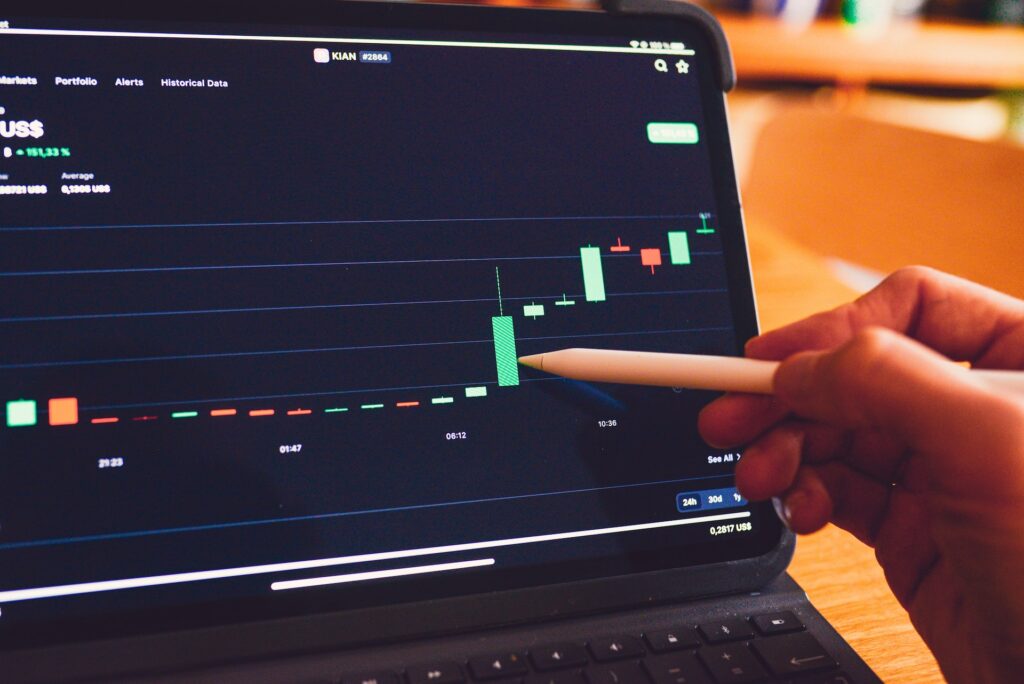How To Read a Profit and Loss Statement for Rental Property

Understanding your business’s financial health is essential when you manage rental properties. The profit and loss statement, sometimes called an income statement, summarizes your rental property income and expenses, giving you a clear financial snapshot for a specific period, typically monthly.
This article will guide you through the process of reading and analyzing your P&L statement. You’ll discover how this essential document can help you evaluate your property’s profitability, meet IRS requirements, and make informed decisions for your rental business.
Key Takeaways
- Identify key information included in a rental property P&L statement
- Learn to calculate and analyze income, expenses, and net figures
- Use your P&L data to strengthen business decision-making
1. Know What Information To Expect in a P&L Statement
A P&L statement for your rental property typically includes these key items:
- Rental income: All earnings from renting out the property.
- Operating expenses: Costs like repairs, cleaning, and maintenance.
- Depreciation expense: An annual allowance for property wear and tear.
- Net income (or loss): The result after subtracting expenses from income.
If you own multiple properties, create a separate statement for each. For more details, consider this rental property profit and loss template.
2. Understand How To Calculate Rental Income
To calculate your rental income, start by adding up all rent payments received from tenants during a specific period. Deduct any rent refunds or allowances, such as a partial refund for repairs, from this total. For example, if you collected $5,000 in rent but returned $200 due to a maintenance issue, your resulting rental income would be $4,800.
Rental income typically includes the following:
- Monthly rent payments
- Non-refundable deposits (e.g., security or pet fees)
- One-time fees for extra services (cleaning, laundry, etc.)
| Payment Type | Included in Rental Income? |
|---|---|
| Monthly Rent | Yes |
| Refunds/Allowances | Subtract |
| Non-refundable Fees | Yes |
| Service Fees | Yes |
According to the IRS guidelines on rental income, all income from renting your property—even payment for services provided—must be reported for tax purposes. Be sure to keep clear records to ensure compliance and accuracy.
3. Determine Your Operating Expenses

Your operating expenses typically include repair and maintenance, cleaning and janitorial services, landscaping, and advertising costs. These are essential for the daily management of rental property. Tracking these expenses allows you to accurately calculate your rental property profit and loss.
4. Calculate Your Depreciation Expense

To determine your depreciation expense for a rental property, start by identifying the property’s depreciable basis. This is the purchase price minus the value of the land, as land cannot be depreciated. Only the cost attributed to the building is eligible.
Next, use the appropriate depreciation period:
- Residential rental properties: 27.5 years
- Commercial properties: 39 years
For a straightforward calculation, divide the depreciable basis by the applicable number of years. For example:
| Asset Type | Depreciable Basis | Useful Life | Annual Depreciation Expense |
|---|---|---|---|
| Residential Rental Property | $150,000 | 27.5 years | $5,454.17 |
| Commercial Property | $150,000 | 39 years | $3,846.15 |
You must report depreciation on IRS Schedule E with your annual tax return. If you’d like help with these calculations, you can use a depreciation calculator tool for added convenience.
It’s recommended to keep all purchase documents and records of improvements, as these affect the depreciable basis. Consulting a tax professional ensures you maximize your allowed deduction and stay compliant.
5. Calculate Your Net Income (or Loss)

To determine your net income (or net loss), subtract your total operating expenses—including depreciation—from your total rental income. This calculation allows you to quickly see whether your property is generating profit or incurring a loss.
Formula:
Net Income = Total Rental Income – Total Operating Expenses
Example Table:
| Month | Rental Income | Operating Expenses | Net Income (Loss) |
|---|---|---|---|
| January | $5,000 | $4,500 | $500 |
| February | $4,000 | $5,000 | -$1,000 |
Gross profit reflects your earnings before expenses, while net profit (net income) shows your actual financial outcome after all costs. Monitoring net profit helps you assess the true performance of your investment.
6. Use Your P&L Statement To Make Better Business Decisions

With a properly maintained Profit and Loss (P&L) statement, you gain clear insight into your rental property’s financial health. Regular review allows you to quickly spot patterns in your income and expenses. If one category is disproportionately high, it’s easy to investigate and make necessary adjustments to improve profitability.
A well-prepared P&L helps you:
- Track operational trends and identify areas for cost reduction
- Compare actual results to your budget for more precise forecasting
- Monitor multiple properties and benchmark performance
When you’re ready to sell, up-to-date P&L documentation supports your asking price. Potential buyers appreciate transparency, and your records can justify your property’s valuation.
| Benefit | Action |
|---|---|
| Reduce unnecessary costs | Review expense categories regularly |
| Enhance profitability | Adjust rents or services as trends dictate |
| Prepare for a sale | Keep P&L statements updated and accessible |
Frequently Asked Questions
What are the necessary components of a profit and loss statement for a rental property?
A profit and loss statement for a rental property should include the following elements:
- Rental income: All sources of income from the property (e.g., monthly rent, late fees, other service fees).
- Operating expenses: Recurring and non-recurring costs such as mortgage interest, property taxes, insurance, repairs, maintenance, utilities, and property management fees.
- Net operating income: Income remaining after deducting operating expenses from rental income.
- Non-operating expenses: Depreciation, amortization, and other non-cash expenditures.
You can find free templates and more details on what to include in your profit and loss statement at Profit and Loss Statement for Your Rental Property Free Template.
How can one calculate net income from rental property using a profit and loss statement?
To calculate net income, use this formula:
Net Income = Total Rental Income - Total Operating Expenses - Non-Operating Expenses
Gather all your income streams and subtract all relevant expenses. For a clearer breakdown, see The Profit and Loss Statement for Real Estate Made Easy.
What are the tax implications for reporting rental income on a profit and loss statement?
All rental income must be reported on your tax return. You can generally deduct expenses related to the management, conservation, and maintenance of your rental property. Keeping accurate statements is crucial for proper reporting and maximizing deductions. The IRS provides more guidance on rental real estate income, deductions, and recordkeeping.
How often should a profit and loss statement be prepared for rental property management?
Best practice is to prepare a profit and loss statement for your rental property either monthly, quarterly, or at least annually. Regular reviews help you track performance and identify potential issues or opportunities quickly.
Can rental property deductions be itemized on a profit and loss statement?
Yes, you should itemize all deductible expenses. This includes line items such as mortgage interest, property taxes, repairs, insurance, utilities, and management fees. An itemized statement makes tax filing easier and supports your claims in case of an audit.
| Expense | Itemize on P&L? |
|---|---|
| Mortgage Interest | Yes |
| Property Taxes | Yes |
| Repairs | Yes |
| Insurance | Yes |
| Utilities | Yes |
| Management Fees | Yes |
What is the difference between cash basis and accrual basis accounting in the context of rental property profit and loss statements?
- Cash basis: You record income when it is received and expenses when they are paid.
- Accrual basis: You record income when it is earned and expenses when they are incurred, regardless of when cash changes hands.
Most small rental property owners use the cash basis for its simplicity, but some prefer the accrual method for a more accurate representation of ongoing financial activity.
Would you like to publish a free blog post on this site?
Are you a real estate professional, property manager, or industry expert with valuable insights to share? We welcome guest contributors who can provide unique perspectives and actionable advice for our community of property investors and managers.
Guest posting is an excellent way to share your expertise while building backlinks and connecting with our engaged audience of real estate investors and professionals. Best of all, there’s no charge to publish your post on our site!

Master the art of real estate investing with The Real Estate Property Management Guide: Premium Edition – your comprehensive roadmap to successful property management.
Whether you’re a novice investor or seasoned professional, this guide covers everything from selecting the right investment properties to tenant management and property marketing.
The author, Jeff Rohde writing as Jeffrey Roark, is a professional with over 25 years of real estate experience. This Premium Edition includes the valuable bonus book Investment Real Estate Analysis: A Case Study to help you identify hidden opportunities and evaluate properties like a professional.
Learn practical, actionable strategies for both residential and commercial properties, from single-family homes to office buildings and shopping centers.
Don’t just buy property – learn how to manage it successfully and maximize your investment potential.
Grab your copy now from your favorite bookseller:
- Amazon (Basic Edition, does not include Investment Real Estate Analysis: A Case Study)
- Books2Read for Apple, Barnes & Noble, Kobo, Scribed, and 8 more sellers with both eBook and paperback options available ((Premium Edition, includes Investment Real Estate Analysis: A Case Study)
- Payhip as a downloadable PDF (Premium Edition)
Ready to take your business to the next level?
- Subscribe to our newsletter
- Visit the learning center
- Learn more about our consulting services
